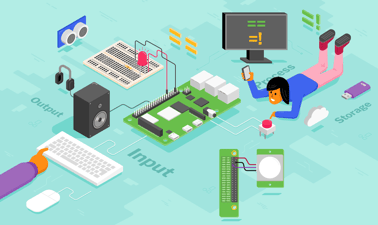4 weeks
2–4 hours per week
Self-paced
Progress at your own speed
Free
Optional upgrade available
There is one session available:
After a course session ends, it will be archivedOpens in a new tab.
Starts Apr 19
Ends Sep 5
Teaching Physical Computing with Raspberry Pi and Python
At a glance
- Institution: RaspberryPiFoundation
- Subject: Education & Teacher Training
- Level: Intermediate
- Prerequisites: None
- Language: English
- Video Transcript: English
Interested in this course for your business or team?
Train your employees in the most in-demand topics, with edX For Business.


